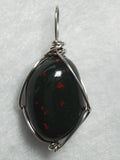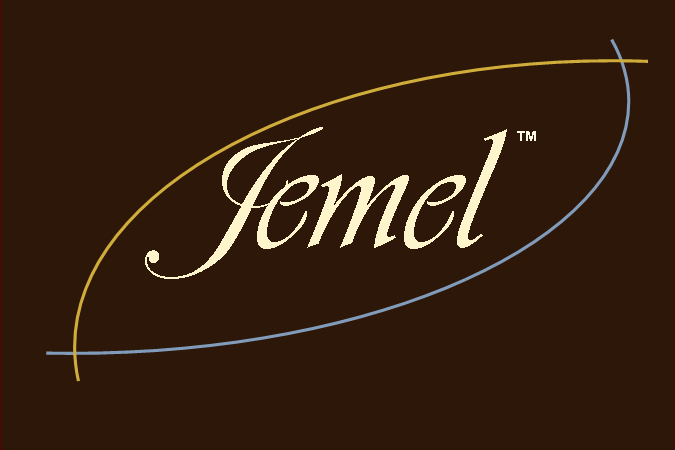Stone Truth - Quartz: Mother of Many Gems
Posted by Steven and Kerly Barben on
QUARTZ: MOTHER OF MANY GEMS

Quartz is a very common stone among gems, and probably much more common than is generally known, as the name “quartz” has only been associated with some of the crystalline varieties. I can’t tell you all of the reasons why the name has kept a rather low profile, but it appears that many of the names given to different varieties of quartz were historically given before quartz itself was defined by composition and crystalline habit. Other reasons may be because it is not considered an attractive or popular name commercially, and the name could easily be over used if all or many in the quartz family of stones contained quartz in their names.
So what gemstones are actually quartz? The purpose of this article is to explain, clarify, and help readers understand the relationships of the many gemstones in the quartz family. By definition, quartz is silicon dioxide (SiO2). It has a hardness of 7; harder than glass (with a hardness of about 5 to 5.5). It is a relatively light stone with a density of 2.65 (or 2.65 times heavier than water). Excepting a few rare minerals, every kind of mineral or stone composed of silicon dioxide is quartz.
Quartz is divided into two general classes which are further divided into subclasses. The general classes are Crystalline Quartz and Chalcedony. Crystalline Quartz includes any variety of quartz with clearly observable hexagonal/pyramidal crystals. Chalcedony includes all amorphous, micro and cryptocrystalline varieties of quartz.
Crystalline Quartz Varieties
Crystalline varieties of quartz in the gem world are transparent to translucent, and are of generally higher value than the Chalcedony varieties, especially when exhibiting consistent and rich color saturation, and/or are faceted. They are usually formed under volcanic or hydrothermal (superheated water) conditions, followed by relatively slow cooling. The sub classes are defined simply by crystal size.
 In the large crystal class, each stone type has its own name. Some stones have still retained the quartz name. These include Quartz Crystal (clear variety), which is often instead called Rock Crystal or simply just “Crystal”; Rose Quartz (pink variety); Smoky Quartz (grey, brown, or black variety); Rutilated Quartz, (rutile crystals within clear quartz); Tourmalinated Quartz (tourmaline crystals within clear quartz); and Dendritic Quartz (dendritic manganese or other moss-like inclusions within clear quartz). Also in the large crystal class are Amethyst (lavender to purple variety), and Citrine (golden yellow to yellow-orange variety).
In the large crystal class, each stone type has its own name. Some stones have still retained the quartz name. These include Quartz Crystal (clear variety), which is often instead called Rock Crystal or simply just “Crystal”; Rose Quartz (pink variety); Smoky Quartz (grey, brown, or black variety); Rutilated Quartz, (rutile crystals within clear quartz); Tourmalinated Quartz (tourmaline crystals within clear quartz); and Dendritic Quartz (dendritic manganese or other moss-like inclusions within clear quartz). Also in the large crystal class are Amethyst (lavender to purple variety), and Citrine (golden yellow to yellow-orange variety). Generally, the small crystal class is simply called Drusy or Druzy. Originally drusy was defined as crusts of tiny crystals lining the inside of an agate or rhyolite geode, but the term has expanded to include many kinds of tiny crystal crusts with no regard to their origin or kind of formation. This has sometimes led to more specific distinguishing names such as agate drusy or drusy chalcedony. While the term drusy alone is commonly understood to mean a fine quartz crystal crust, because of an increased variety of small crystal crusts, it is often further clarified by adding a stone name either before or after the term, such as amethyst drusy or drusy quartz. There are many kinds of crystal crusts called drusy, including minerals outside the quartz family. Pyrite drusy is one example. Crystals on a drusy stone typically have a size range from fine to coarse sand. Drusy stones are valued mostly for their sparkling or shimmering surface.
Chalcedony Varieties
Chalcedony varieties of quartz in the gem world are typically translucent to opaque. They may be formed under volcanic or hydrothermal (superheated water) conditions, followed by relatively rapid cooling; or in either sedimentary or metamorphic environments. The subclasses are Chalcedony, Agate, and Jasper with some few stones somewhat associated with one of these classes, but nevertheless in classes of their own.
The general Chalcedony class includes most stones that are not further defined by either the agate or jasper classes. White, Brown, and Black
 Chalcedony, and Chalcedony Roses (uniquely shaped bubbled and rippled free form stones) are part of this class, as well as Carnelian (orange to orange brown), Blue Chalcedony (light blue to medium blue-grey), and Chrysoprase (green to yellow-green). All of these stones are typically translucent to some degree and often appear to radiate light or have a glowing effect.
Chalcedony, and Chalcedony Roses (uniquely shaped bubbled and rippled free form stones) are part of this class, as well as Carnelian (orange to orange brown), Blue Chalcedony (light blue to medium blue-grey), and Chrysoprase (green to yellow-green). All of these stones are typically translucent to some degree and often appear to radiate light or have a glowing effect. There is some confusion in distinguishing the differences between the Agate and Jasper subclasses in reference to historical, modern, and commercial definitions (a topic for further discussion), but agate is usually defined as cryptocrystalline (fine fibrous crystal structure) quartz, translucent to opaque, with an ordered pattern of lines, bands, layers, concentric circles, etc. The Agate subclass includes: Botswana Agate (fine concentric lines of clear, white, brown and grey); Blue Lace Agate (alternating bands of different shades of light blue); Brazilian Agate (Bands of varying shades of translucent grey or brown), and a great many others – too many to list.
 The Jasper subclass is usually defined as amorphous to microcrystalline quartz, opaque (no light can pass through), with either random, disordered pattern, or no pattern at all. Some jaspers may be cryptocrystalline as well, but since they are opaque, the cryptocrystalline structure cannot be observed. The Jasper subclass includes: Red, Yellow, or Green Jasper; Bloodstone (green with red spots and splotches); Picture Jasper (random wavy patterns of yellow-tan, brown and black); and a great many others – also too many to list.
The Jasper subclass is usually defined as amorphous to microcrystalline quartz, opaque (no light can pass through), with either random, disordered pattern, or no pattern at all. Some jaspers may be cryptocrystalline as well, but since they are opaque, the cryptocrystalline structure cannot be observed. The Jasper subclass includes: Red, Yellow, or Green Jasper; Bloodstone (green with red spots and splotches); Picture Jasper (random wavy patterns of yellow-tan, brown and black); and a great many others – also too many to list. A few stones generally fall under the Chalcedony class, but do not quite fit into any of the sub- classes. These include replacement stones such as Petrified Wood (ancient wood replaced by quartz – var, jasper) and Tiger’s Eye (fibrous crystals of crocidolite, riebeckite, or other asbestos like minerals replaced by quartz); and metamorphic quartz (quartzite) gem called Aventurine (green, red, white, or orange-coral color with sparkling flecks of tiny mica or goethite crystals)
Copyright 2015 Steven A. Barben
General References
Pough, Frederick. 1983. Peterson Field Guides: A Field Guide to Rocks and Minerals.Houghton Mifflin Co.
Mottana, Annibale; Crespi, Rodolfo; and Liborio, Giuseppe. 1978. Simon & Shuster’s Guide to Rocks and Minerals. Simon & Shuster Inc.
Note: Minor sources may include, but are not limited to a variety of printed and online sources.
 Steven A. Barben shares stories from his book - Wisdom's Way: Tales, Treasures, Truths in "Wisdom in Story;" provides stone information and tales that typify emotions, moods, and personality or character symbols of various stones in "Wonder in Stone;" and clears confusion, raises awareness, and opens stone, gem and jewelry understanding in "Stone Truth."
Steven A. Barben shares stories from his book - Wisdom's Way: Tales, Treasures, Truths in "Wisdom in Story;" provides stone information and tales that typify emotions, moods, and personality or character symbols of various stones in "Wonder in Stone;" and clears confusion, raises awareness, and opens stone, gem and jewelry understanding in "Stone Truth."
Share this post
0 comment



